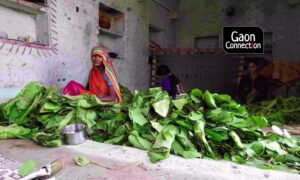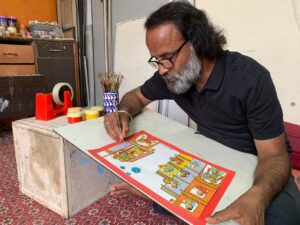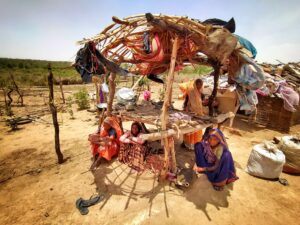In 2010, a movie named ‘Aisha’ was released in which the protagonist, a fashion slave, wants to reform and restyle a naive and innocent girl from Bahadurgarh, a small town in Haryana. Such imagery of people from small towns and villages is evident across sociocultural institutions in ‘smart’ metropolitan cities of India.
Today, it is difficult to tell whether movies are a reflection of society or society is a reflection of movies in a world wherein video based content is being published at lightning fast speed.
Unlike earlier times, when parallel cinema served as a mirror to our sociopolitical systems, today movies glorify the good and the bad to an unimaginable extent in their run upto global domination and modern audiences. Rural society is often put at the feet of the urbanising and globalising world in movies.
According to the World Bank, as of 2019, 66 per cent of our population lives in rural India. Moreover, the rural economy contributes 46 per cent to the country’s national income with almost 70 per cent of its workforce residing in rural areas.
Juxtaposed to these overwhelming numbers, a negligible number of movies in the Bollywood industry are based on rural reality annually.
While ‘Swades’ was one of those rare stories which reflected on the good and bad of rural society, it was more about giving back to motherland and less about the significance of rural India in people’s life. Movies like ‘Dangal’ or ‘Dabangg’ tell rural stories but they are mostly about characters’ run upto urban glory. And a movie like ‘Peepli Live’, which is truly representative of rural reality, suffers from the vagaries of commercial space and economic viability.
Does that mean Rural India has lost its significance and become redundant for discussions and public discourse? Does this also imply that rural India can only be reformed with modern interventions and there is nothing worth cherishing in rural stories?
“While a lot of Bollywood movies have told us the tale of that rural boy who came to urban India to make a living, no story talks about an urban boy who moved to rural India to make it big”, said Virendra Saxena in a conversation with Gaon Connection on rural India and its place in contemporary Hindi cinema. He gave a fascinating explanation of the cinema industry citing that “Mumbai is not a place to live but a market” where diverse views and thoughts compete with each other.
One can’t help but agree with him on how commercial viability is the major barrier to rural stories. Saxena, whose voice reverberates in people’s hearts, has been a pioneer of parallel cinema. His characters have been a true epitome of reality and probity. He went on to elaborate how individuals can only register their opinions and thoughts through movies and writings but it is the government’s prerogative to encourage filmmaking at regional level to curate diversity of rural India.
But, what is it about rural India that constantly draws people towards it? In a discussion on diversity of Indian hinterland, Saxena told Gaon Connection that, “there is diverse and unparalleled creativity in rural India which is usually not given its deserved place in movies” and a major reason for that is because “we urban Indians like to live an artificial life, ostracising rural probity and benevolence”. While he suggested some long term solutions through intervention in education pedagogy, say teaching Madhubani Art at school level to bring rural India to the fore, he emphasised on individual efforts that people should make to reform the status quo.
Gaon Connection also spoke with Renuka Sharma, who has been a traveler, an entrepreneur, and is now pursuing a career in acting. “But things are changing today with new platforms emerging every fortnight”, said Sharma. Her experiences have been fearless, diverse and truly inspirational. She has worked in ‘Kaafir’, ‘Guilty’, ‘Shakuntala Devi’ and ‘HT Neighbour’s Kitchen’. Her current work is in the upcoming movie ‘Bole Chudiyan’.
On raising a concern on Bollywood’s lack of acknowledgement for rural India, Sharma told how “industry is filled with people from rural backgrounds” and “all of them are making tremendous interventions in creating a space for stories on Indian hinterland”.
She went on to explain how “rural women are steadfast, hardworking and greatly empowered” and how “this reality of Indian rural women is often overshadowed by the grim reality of gender violence and oppression”. She emphasised on a recent movie called ‘Bareilly Ki Barfi’ that showed how rural India is taking plunges towards a progressive society. She also reminisced over her grandparents’ memories of the Partition when it was rural India that built a new India right from scratch.
“While a lot of people come from rural areas to urban spaces, how many families actually teach their children to go back to their roots, sit with grandparents and share a conversation,” exclaimed Sharma while discussing how urban attitudes need to change towards rural spaces. Quite interestingly, this argument resonates with Saxena’s submission on manifestation of this ‘missing rural reality from common lives’ in movies as well.
Rural India has tremendous knowledge that needs immediate attention. According to a research published by Oxford University, contemporary environmental crises can be solved if we combine scientific research with indigenous knowledge. This is so because indigenous communities have a deep knowledge of environment, weather and ecology at large, which they have evolved over thousands of years. This research is evident enough to prove that rural India has a lot to offer in terms of science, industry, agriculture, art and culture.
“But movies on rural India do not make much business”, said Saxena when asked about the absence of rural reality in Hindi cinema. He mourned over the sad demise of rural story in movies saying that, “contemporary Hindi cinema has done wrong to rural India”.
Hindi parallel cinema has been the reflection of rural stories. Movies like ‘Ankur’, ‘Paar’, ‘Do Bigha Zameen’, ‘Suraj Ka Satvan Ghoda’ and ‘Antarnaad’, have been truly representative of rural India. These movies are great examples of the dynamics of India’s sociopolitical systems and how realities of an individual are part of a collective reality. The serenity and gratification of witnessing reality in such movies is way beyond the momentary pleasure of watching a falsified glorification.
Movies are beyond a mere piece of entertainment. They are repositories of knowledge and information of social and political systems. They serve as the mirror to culture and economy. Just as architecture and craft were a major source of disseminating knowledge in ancient times, movies and writings are today’s medium. These are going to be the most credible sources of information of contemporary history for coming generations.
Isn’t it the responsibility of filmmakers and government stakeholders to craft these sources of information in a credible way so that the future generations do not fight over knowledge asymmetry and information gaps about history just as current generation struggles today!
Anjali Sharma is PhD candidate in economics of agriculture, environment and development.



















